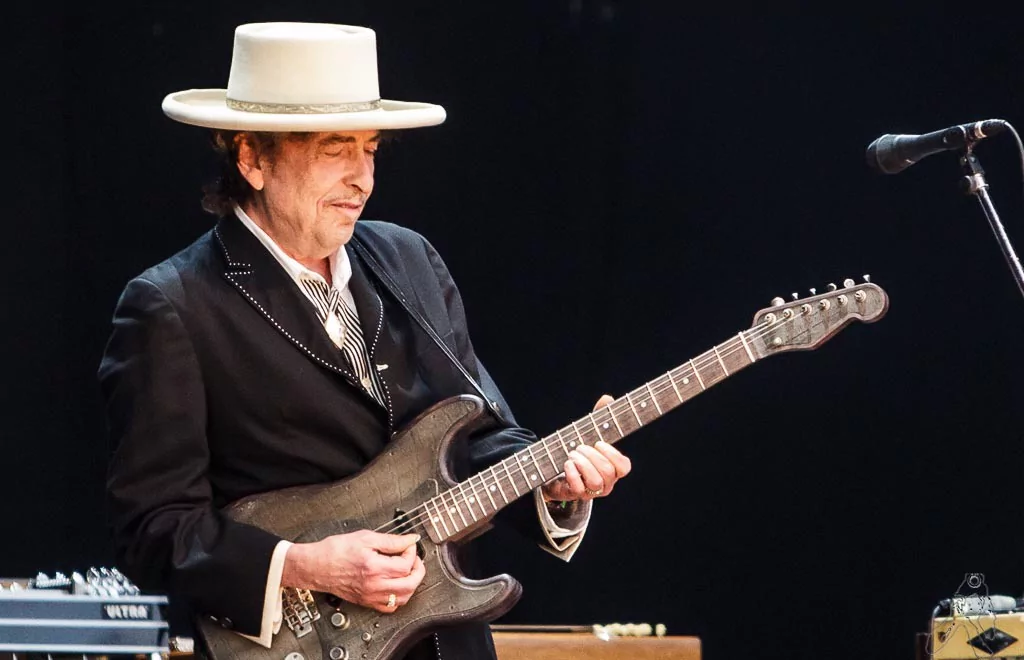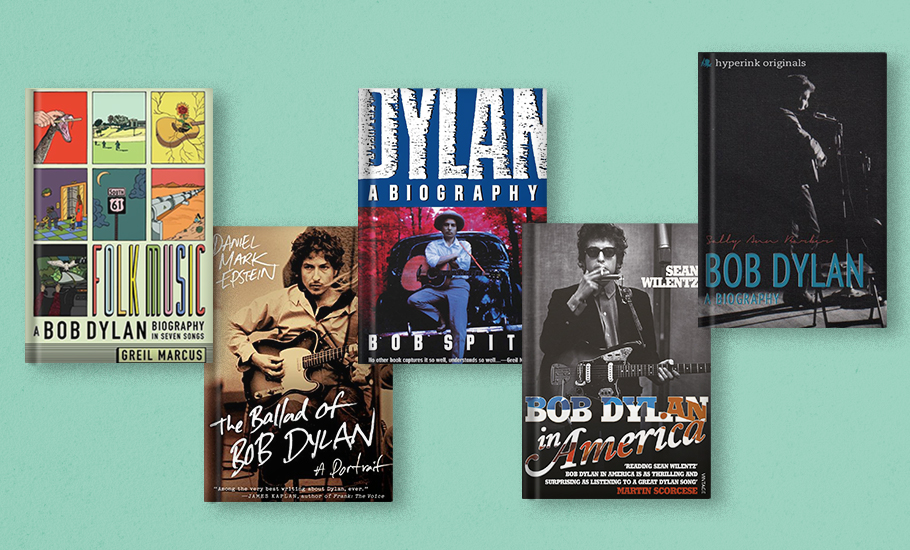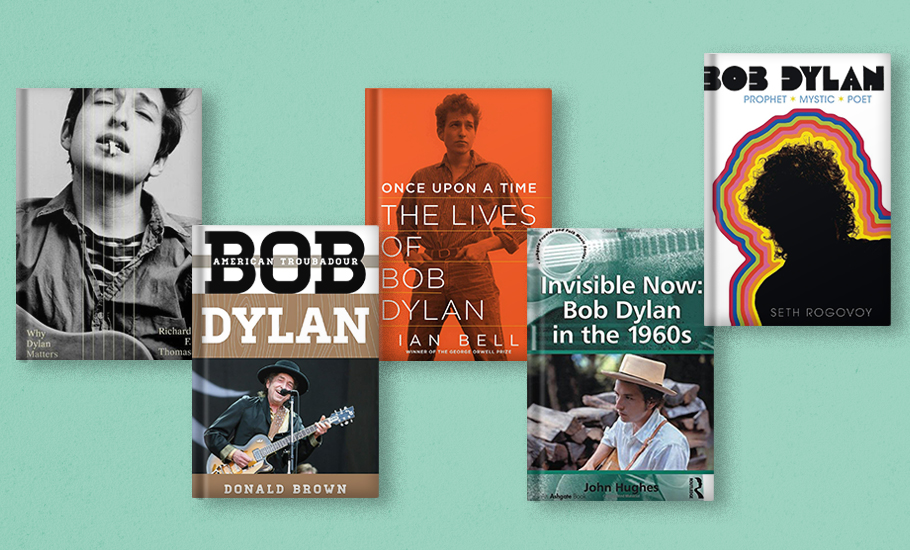
What Bob Dylan’s biographies tell us about the man and his music
As Bob Dylan releases a new book of writing, ‘The Philosophy of Modern Song’, a look at how his biographers have chronicled America’s troubadour and his work

On November 1, Bob Dylan, one of America’s most enduring artistes, published The Philosophy of Modern Song (Simon & Schuster India), his first book of new writing since 2004’s Chronicles: Volume One.
Dylan, who has released 39 studio albums, began working on this book in 2010, six years before he won the Nobel Prize for Literature. The book offers his extraordinary insight into the nature of popular music. In over sixty odd essays in the book, he delves into songs by other artists — from Stephen Foster to Elvis Costello, from Hank Williams to Nina Simone. Dylan analyses what he calls the trap of easy rhymes, breaks down how the addition of a single syllable can diminish a song, and even explains how bluegrass relates to heavy metal.
“These essays are written in Dylan’s unique prose. They are mysterious and mercurial, poignant and profound, and often laugh-out-loud funny. And while they are ostensibly about music, they are really meditations and reflections on the human condition. Running throughout the book are nearly 150 carefully curated photos as well as a series of dream-like riffs that, taken together, resemble an epic poem and add to the work’s transcendence,” read a release by the publisher.
In 2020, with the release of his outstanding album Rough and Rowdy Ways, Dylan became the first artiste to have an album hit the Billboard Top 40 in each decade since the 1960s. The Philosophy of Modern Song contains much of what he has learned about his craft in all those years.
Also read: Ziro Music Festival 2022: Kochi rock to Nepali pop, 4 days of delighting the senses
Dylan, the man and his music, has been the subject of scores of biographies since he set out to tell his own story in Chronicles: Volume One. Here is a look at how some of them approach and analyse the artiste and his art:

Folk Music: A Bob Dylan Biography in Seven Songs
By Greil Marcus
Yale University Press, 2022
Let’s begin with the latest. Across seven decades, Bob Dylan has been the first singer of American song. As a writer and performer, he has rewritten America’s national songbook in a way that comes from his own vision and yet can feel as if it belongs to anyone who might listen. In Folk Music: A Bob Dylan Biography in Seven Songs, American writer and cultural critic Greil Marcus, whose books include The History of Rock ’n’ Roll in Ten Songs, tells Dylan’s story through seven of his most transformative songs.
The seven songs include: Blowin’ In The Wind (1962), The Lonesome Death of Hattie Carroll (1964), Ain’t Talking (2006), The Times They Are A-Changin’ (1964), Desolation Row (1965), Jim Jones (1992), and Murder Most Foul (2020). Marcus’ aim is to also examine the history of American folk songs and Dylan’s relationship with them. Marcus’s point of departure is Dylan’s ability to “see myself in others.” Like Dylan’s songs, this book is a work of “implicit patriotism and creative scepticism”. It illuminates Dylan’s continuing presence and relevance through his empathy—his imaginative identification with other people.
The Ballad of Bob Dylan: A Portrait
By Daniel Mark Epstein
Harper Perennial, 2011
US poet and biographer Daniel Mark Epstein frames Dylan against the backdrop of four seminal concerts, all of which he attended: Lisner Auditorium, Washington, D.C., 1963; Madison Square Garden, New York City, 1974; Tanglewood, Massachusetts, 1997; Aberdeen, Maryland, 2009. Recreating each performance song by song, Epstein places them within the larger context of Dylan’s life, from his meteoric rise as a young folk singer through his reemergence in the 1990s and his role as the éminence grise of rock-and-roll today.
Epstein explores the star’s private side, including marriage and fatherhood, and his struggle to overcome substance abuse. He also traces the influences that shaped Dylan’s career and offers a thoughtful analysis of his work and fresh interpretations of his lyrics. There are anecdotes and insights from those closest to the man, including D. A. Pennebaker, Allen Ginsberg, Nora Guthrie, Ramblin’ Jack Elliot, and Dylan’s sidemen throughout the years.
Dylan: A Biography
By Bob Spitz
W.W. Norton & Company, 1991
If there is any biography that looks beyond the myths surrounding Dylan to chronicle his transformation from a middle-class Jewish boy from Minnesota to a musical superstar and pop culture icon, it is this. Writer Bob Spitz, author of Barefoot in Babylon, the story of the 1969 Woodstock festival, spent years researching Dylan’s life. Spitz has written biographies of major cultural figures, including Led Zeppelin and Ronald Reagan.
In Dylan: A Biography, Spitz provides a dramatic yet clear-eyed view of the enigmatic guru of modern music. Drawing on hundreds of interviews with Dylan’s family, friends, lovers and fellow musicians, he presents the true Dylan in a vast array of guises: the early years in small-town Minnesota, when Bobby Zimmerman — loner, gadabout and local weirdo — reinvented himself as Bob Dylan and set out to be a star; his struggle to conquer the night world of Greenwich Village in the early 1960s; the cataclysm that rocked the music world when he went electric; the mad yRears, when drugs and paranoia corrupted his gospel of peace and love; his flirtations with political causes, born-again Christianity, Orthodox Judaism and the glitter of superstardom.
Bob Dylan in America
By Sean Wilentz
Knopf Doubleday Publishing Group, 2010
Sean Wilentz, considered to be one of America’s finest historians, shows us how Dylan still surprises and moves us after all these years. Growing up in Greenwich Village, Wilentz discovered the music of Dylan as a young teenager; in Bob Dylan in America, he revisits Dylan’s work with the skill of a historian, and the passion of a fan. Drawn in part from Wilentz’s essays as “historian in residence” of Dylan’s official website, Bob Dylan in America blends fact, interpretation, and affinity; it’s a book that, much like its subject, shifts gears and changes shape as the occasion warrants.
Beginning with his explosion onto the scene in 1961, it follows Dylan as he continues to develop a body of musical and literary work unique in our cultural history. Wilentz’s approach places Dylan’s music in the context of its time, including the early influences of Popular Front ideology and Beat aesthetics, and offers a larger critical appreciation of Dylan as both a songwriter and performer down to the present. Wilentz has had unprecedented access to studio tapes, recording notes, rare photographs, and other materials, all of which allow him to tell Dylan’s story and that of such masterpieces as Blonde on Blonde with an unprecedented authenticity and richness.
Bob Dylan: A Biography
By Sally Ann Barber
Hyperink, 2012
This one dwells on Dylan’s closely guarded personal story and struggles, including his most public romantic relations with folksinger Joan Baez; the two were involved for a brief period beginning in 1963. The relationship forwarded both of their musical careers. He opened for Baez, already a headliner, and she performed Dylan’s protest songs which secured her a firm place in the folk genre. The arrangement with Baez introduced Dylan to wider folk audiences. It details how Dylan has pushed the envelope in the music world time and again.
Dylan was a reluctant spokesperson for the protest movement of the 1960s. His driven creative journey through music genres, film, literature and painting established a rich body of work provocatively articulating the human experience of the late 20th and early 21st centuries. His second album, The Freewheelin’ Bob Dylan, was released in 1963. Unlike the earlier folk album, it primarily contained original songs, including the iconic Blowin’ In the Wind, and anti-war songs, Masters of War and A Hard Rain’s A-Gonna Fall. Besides Baez, established artists like Peter, Paul and Mary recorded Dylan’s new wave protest music, launching his image as a spokesperson of the Vietnam anti-war era.

Why Bob Dylan Matters
By Richard F. Thomas
William Collins, 2017
When the Nobel Prize for Literature was awarded to Dylan in 2016, a debate raged. Some celebrated while many others questioned the choice. How could the world’s most prestigious book prize be awarded to a famously cantankerous singer-songwriter who wouldn’t even deign to attend the medal ceremony? In Why Bob Dylan Matters, Harvard professor Richard F. Thomas answers this question with magisterial erudition. A world expert on classical poetry, Thomas was initially ridiculed by his colleagues for teaching a course on Bob Dylan alongside his traditional seminars on Homer, Virgil, and Ovid.
Also read: BTS members plan to fulfill military duties, group hopes to reconvene around 2025: BigHit Music
Dylan’s Nobel Prize brought him vindication, and he immediately found himself thrust into the spotlight as a leading academic voice in all matters Dylanological. Today, through his wildly popular Dylan seminar — affectionately dubbed “Dylan 101” — Thomas is introducing a new generation of fans and scholars to the revered bard’s work. The book is a distillation of Thomas’ famous course and makes a compelling case for moving Dylan out of the Rock and Roll Hall of Fame and into the pantheon of classical poets.
Bob Dylan: American Troubadour
By Donald Brown
Rowman & Littlefield Publishers, 2014
Bob Dylan: American Troubadour looks at Dylan’s career, from his first album to his late masterpiece Tempest. In this concise and informed critical exploration of Dylan’s music and his place in the American musical landscape, Donald Brown provides insightful critical commentary on Dylan’s prolific body of work, placing Dylan’s career in the context of its time in order to assess the relationship of Dylan’s music to contemporary American culture.
Each chapter follows the shifting versions of Dylan, from his songs of conscientious social involvement to more personal exploratory songs; from his influential rock albums of the mid-1960s to his adaptations of country music; from his three very different tours in the 1970s to his “born again” period as a proselytizer for Christ and his frustrations as a recording and performing artist in the 1980s; from his retrospective importance in the 1990s to the refreshingly vital albums he has been producing in the twenty-first century.
Once Upon A Time: The Lives of Bob Dylan
By Ian Bell
Pegasus, 2013
In Once Upon a Time, award-winning British writer Ian Bell, author of Dreams of Exile (1992), a biography of Robert Louis Stevenson, draws together the tangled strands of the many lives of Dylan in all their contradictory brilliance. For the first time, the laureate of modern America is set in his entire context: musical, historical, literary, political, and personal. Full of new insights into the legendary singer, his songs, his life and his era, this biography reveals the artist who invented himself in order to reinvent America.
Once Upon a Time is a study of a personality that has splintered and reformed, time after time, in a country forever struggling to understand itself. Dylan has become the mystery that illuminates. Here, in the first part of a major two-volume work, the mystery is explained. The second volume, Time Out of Mind: The Lives of Bob Dylan, follows his story by the middle of the Seventies.
Invisible Now: Bob Dylan in the 1960s
By John Hughes
Routledge, 2013
Invisible Now describes Dylan’s transformative inspiration as an artiste and cultural figure in the 1960s. Hughes identifies Dylan’s creativity with an essential imaginative dynamic, as the singer perpetually departs from a former state of inexpression in pursuit of new, as yet unknown, powers of self-renewal.
This motif of temporal self-division is taken as corresponding to what Dylan later referred to as an artistic project of ‘continual becoming’, and is explored in the book as a creative and ethical principle that underlies many facets of Dylan’s appeal. Accordingly, the book combines close discussions of Dylan’s mercurial art with related discussions of his humour, voice, photographs, and self-presentation, as well as with the singularities of particular performances. The result is a nuanced account of Dylan’s creativity that allows us to understand more closely the nature of Dylan’s art, and its links with American culture.
Bob Dylan: Prophet, Mystic, Poet
By Seth Rogovoy
Scribner, 2009
In Bob Dylan: Prophet, Mystic, Poet, US-based author Seth Rogovoy, whose books include The Essential Klezmer: A Music Lover’s Guide to Jewish Roots and Soul Music (Algonquin Books, 2000), delves extensively into Dylan’s Jewish heritage and the influence of Judaism in his work, rectifying an oversight in most of his biographies.
Rogovoy unearths the various strands of Judaism that appear throughout Dylan’s songs, revealing the ways in which Dylan walks in the footsteps of the Jewish Prophets. He explains the profound depth of Jewish content — drawn from the Bible, the Talmud, and the Kabbalah — at the heart of Dylan’s music, and demonstrates how his songs can only be fully appreciated in light of Dylan’s relationship to Judaism and the Jewish themes that inform them.
Compiled by Nawaid Anjum


